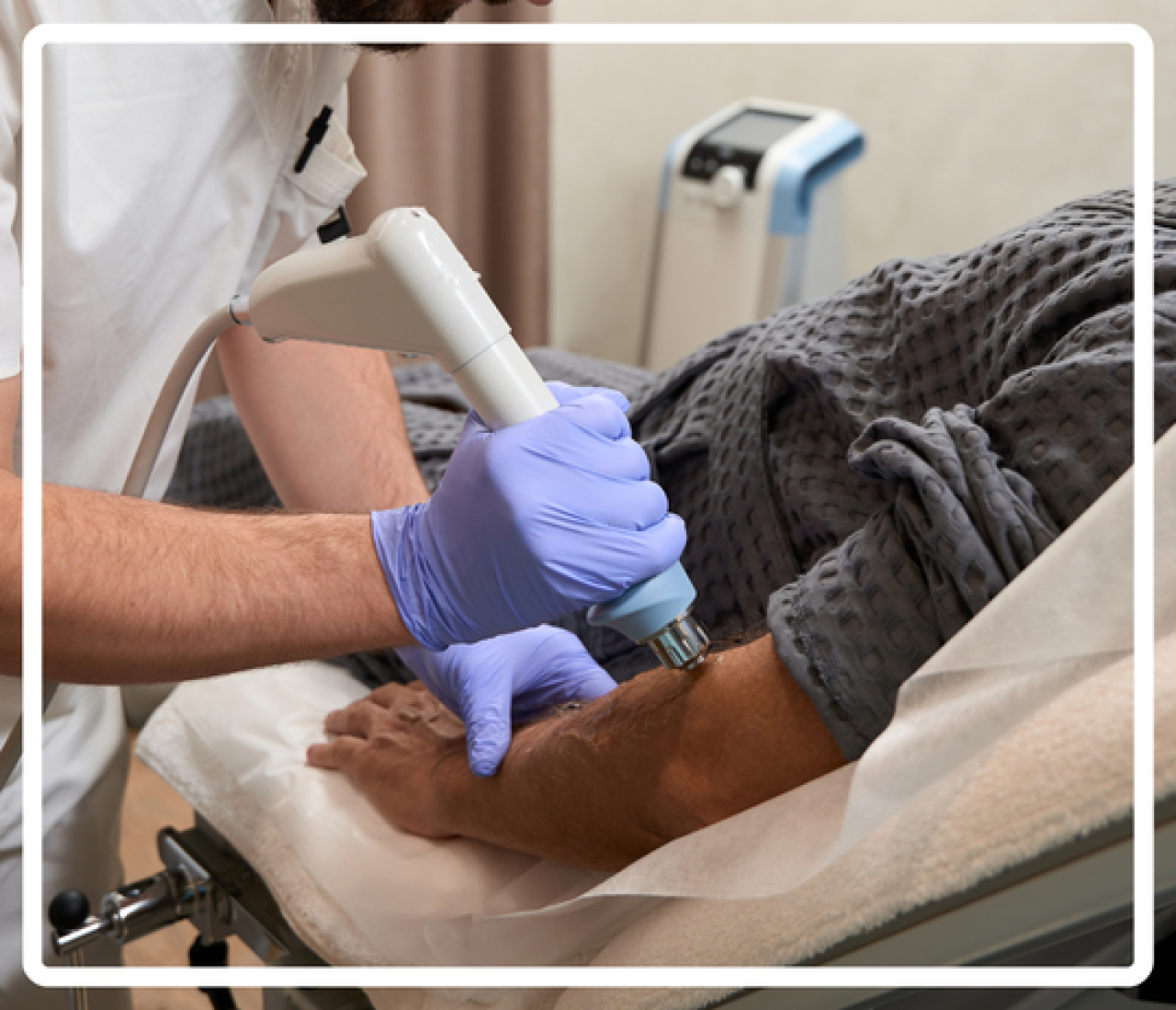
Exploring Shockwave Therapy (ESWT): Applications and FAQs Answered
What is Shockwave Therapy?
Shockwave Therapy, also known as extracorporeal shockwave therapy (ESWT), stands as a safe, potent, and highly effective therapeutic approach for addressing a spectrum of muscle, tendon, and bone issues.
This method of treatment is usually used by orthopaedic surgeons, physiotherapists, podiatry specialists and others. It is a great alternative to pain medications, injections, surgery or suffering with long-term or non-healing painful conditions.
How does it work?
Extracorporeal shock waves function on several levels. Pain is first alleviated by hyperstimulation anaesthesia, which reduces nerve pain impulses sent to the brain. The treatment works by reducing the quantity of pain mediators released by nerve terminals, resulting in less pain.
In the case of persistent, poorly healed conditions within the body, shockwave therapy is an effective treatment option. The shockwaves are mechanical pressure pulses, not electrical pulses, that produce an audible ticking sound as a result of the machine's sound wave. In shockwave treatment, sound waves are utilized to target painful locations. By absorbing them into the body's tissues and cells, these waves drive regeneration and healthy development of bones, muscles, and tendons. These high energy acoustic waves are meant to promote physical changes and healing by focusing them on the diseased tissue.
It also aids in the fight against local inflammation and promotes the repair and regeneration of musculoskeletal tissues by increasing blood flow to the afflicted area.
Although the shockwave energy is directed at a specific region, it produces a wave-like effect inside the body to induce tissue remodelling. The microtrauma caused by shockwave treatment encourages a variety of mechanisms that both irritate and repair.
Benefits of ESWT
Shockwave therapy is a non-invasive form of treatment and does not require the use of anaesthesia, medications or surgery. It has been revealed in studies to have a range of significant therapeutic benefits, including:
Increases metabolism and circulation in the blood.
Pain signals are reduced - it desensitises the nerve endings and immediately eases the pain.
Bone tissue regeneration.
Forms new blood vessels causing repair of damaged tissue by which reducing microtears and traumas in the affected area.
It reduces the inflammation and spasms, which in turn will reduce pain and improve mobility
Calcification resorption in the tendon.
Decreased tendinopathies
What conditions can shockwave therapy treat?
Conditions include but are not limited to:
Plantar Fasciitis
Hip and shoulder bursitis
Achilles tendinopathy
Carpal tunnel syndrome
Gluteal Tendinopathy
Hamstring tendinopathy
Iliotibial band syndrome
Lateral epicondylitis (tennis elbow)
Medial tibial stress syndrome (shin splints)
Myofascial trigger points
Osgood-Schlatter disease
Patellar tendinopathy
Shoulder tendinitis & rotator cuff
What precautions should be taken prior to seeking shockwave therapy?
Shockwave therapy is not appropriate for everyone. If you have any of the following conditions, please notify your practitioner:
Pregnancy
Diabetes
Heart or circulation issues
Bleeding and blood coagulation disorders and, associated medication consumption
Cortisone injections one month prior to starting shockwave therapy treatment
A skin wound or severe inflammation in the treatment area
Tumour in or near the treatment site
Nerve or blood supply too located close to the treatment location
FAQs
What happens during my shockwave therapy session?
During your shockwave therapy session, our dedicated practitioner will commence with an initial assessment to carefully evaluate your condition and ascertain if shockwave treatment is suitable for you. Following this comprehensive consultation, treatment will commence on the same day, ensuring you are fully informed about the procedure and what to expect throughout your therapy journey. Following this, the practitioner may advise on the estimated number of sessions needed to treat you and rehabilitation exercises to help aid your journey to recovery. Your following sessions will then consist of tracking the progress of recovery and pain management whilst under shockwave therapy.
Will a referral be necessary for Shockwave Therapy?
No, a referral is not required. However, an initial examination by one of our skilled physiotherapists is necessary to determine if Shockwave Therapy is suitable for your condition. If you intend to seek coverage from your insurance provider for the treatment, it's advisable to contact them directly.
Is shockwave therapy safe?
Yes, shockwave therapy is considered to be safe, in particular compared to alternative treatments such as surgery. There is no risk of infections due to its non-invasive nature and therefore it does not penetrate the skin. We may not use this for of treatment in some cases for the sake of caution. This can be further advised through the guidance of our practitioners if need be.
Does it hurt?
Treatment may be a little painful, but most people are usually able to tolerate it. If you cannot tolerate it, please let your practitioner know, as the power can be amended to ensure you are comfortable.
Are there any side effects?
In general, the treatment leans towards being uncomfortable rather than painful, and is well tolerated by most patients. This may, however, be quite unpleasant in some situations. In an effort to reduce pain and discomfort, our dedicated team will work with you. The most common other side effect is local bruising or occasional abrasions, other than the pain experienced during the procedure.
How effective is it?
Some patients have reported a rapid improvement of their pain; however, best results can be achieved within 6 to 12 weeks after the initial treatment.
We trust that this blog post has effectively addressed any inquiries you may have had regarding shockwave therapy. If you believe you could benefit from it, don't hesitate to experience the transformative benefits of shockwave therapy by scheduling your appointment today!